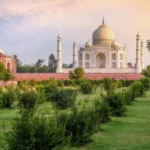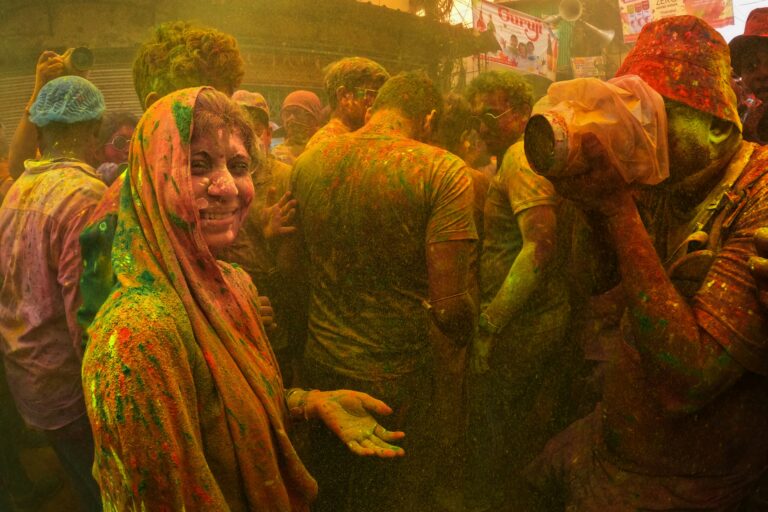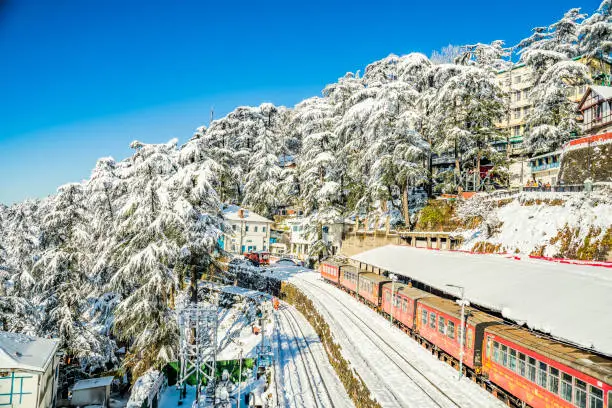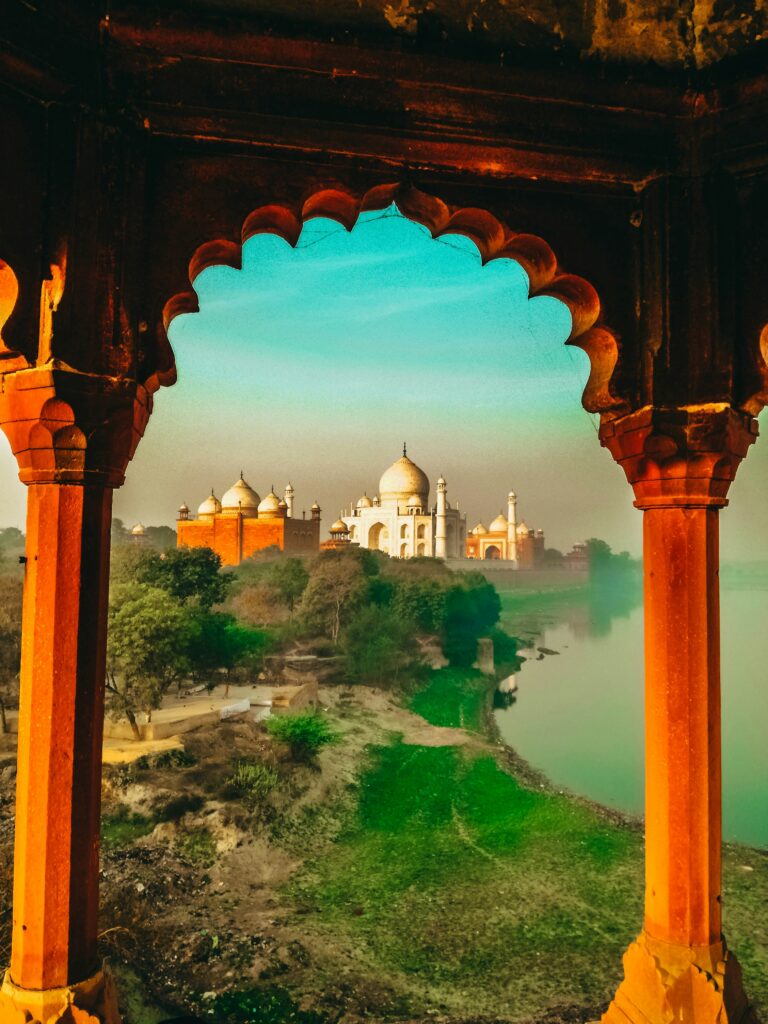Main Info
Route: Delhi – Agra – Pushkar – Jodhpur – Varanasi – Cochin – Kumarakom
Theme: Photography
Ideal For: Photographers, artists, bloggers, and creative explorers
Description
This 14-day photography-focused tour is a visual celebration of India’s color, contrast, and culture. Designed for storytellers behind the lens, it guides you through iconic heritage, bustling streets, serene backwaters, and sacred rituals — from the blue alleys of Jodhpur to the sunrise ghats of Varanasi, and from Mughal grandeur in Agra to tranquil reflections in Kerala’s Kumarakom.
Whether you’re capturing portraits in Pushkar, temple silhouettes in Varanasi, or Chinese fishing nets in Cochin, each destination offers a perfect frame and endless inspiration.
Tour Information
| Departure | Delhi (DEL) |
|---|---|
| Return | Cochin (COK) |
| Included |
Airport pickup/drop in Delhi & Cochin Accommodation with daily breakfast Surface transfers in air-conditioned vehicle Domestic flights (Jodhpur–Varanasi, Varanasi–Cochin) Entry fees at major monuments and sightseeing Local photography guide (optional at extra cost) |
| Excluded |
International airfare Personal camera gear & permits (e.g., for tripod use in some monuments) Meals other than breakfast Photography workshops (on request) Personal expenses, tips & insurance |
Itinerary
On your arrival in Delhi, you will be met by our representative and transfer to hotel. Delhi was the capital of Indraprastha and capital of the Pandavas during the Mahabharata. This magnificent city has been inhabited from the 6th century BC and has been a capital of many kingdoms. It has been destroyed and rebuilt many times and is called the "city of cities". Delhi's culture has been influenced by its different rulers and the city is full of beautiful monuments. The Mughal rulers influenced the food habits of the residents and Mughlai cuisine originated here. Due to the proximity of different states, all festivals are celebrated here. Old Delhi is a maze of small lanes and old buildings and New Delhi has large road with huge buildings. Delhi is the capital of India and is the hub for politics. Overnight in Delhi.
Your morning tour starts with Old Delhi, built by the Mughal emperor Shah Jahan in 1639 AD. You will visit the Raj Ghat where father of our nation Mahatma Gandhi was cremated. You will be visiting the museum that was built to commemorate him. You will be driven past the iconic Red Fort and Chandni Chowk, a very popular and a busy market in Old Delhi to the next stop - Jama Masjid, one of the iconic, historic and largest mosques in India - built by Shah Jahan. A rickshaw ride in Chandni Chowk could be quite interesting as this part of the city is quite crowded as it is full of shops. These numerous shops sell delicious mouth-watering food, clothes, jewels, household, etc. and are virtually a shopper's paradise.
In the afternoon, you will visit Qutub Minar, touted as India's largest Minaret. Qutub Minar, a UNESCO World Heritage Site, was built in 1192 by Turk ruler Qutub-Ud-Din Aibak. Your next stop is India Gate, built in memory of the Unknown Soldier. You will be driven past the Parliament House, President's House and other Government Secretarial Buildings. Overnight in Delhi.
Day at leisure. (No Transport services on this day) Overnight at hotel.
This morning you will drive to Agra. Agra, the former capital of Hindustan, is a city on the banks of the river Yamuna. Agra is a major tourist destination of India and a part of the Golden Triangle tourist circuit along with Delhi and Jaipur. Agra, also known as Akbarabad, went through its peak during the time of the Mughals and was the capital of the Mughal rulers Akbar, Jahangir and Shahjahan. In the visit of Agra, you will be taken to the Taj Mahal, one of the wonders of the world. This beautiful building is elegantly built with white marble by the Mughal Emperor Shah Jahan between the years 1631 and 1648, and it was built in the memory of his favorite beloved Queen Mumtaz Mahal. Standing majestically on the banks of the Yamuna River, this breathtaking, beautiful monument is synonymous with romance and love.
Your next stop, Agra Fort is a UNESCO World Heritage Site and known for its architectural structure, and was built in the 16th century during the Mughal Empire. This place comprises several fairy-tale palaces like Khas Mahal and Jahangir Palace. Over here you will also get a chance to see Diwan-e-Aam and Diwan-e-Khas, which are also known as the private audience hall and the public audience hall. Afternoon can be spent visiting more places of interest or shopping. Agra is famous for inlaid marble work and handicrafts made of marble, wood, and metal. The transport is at your disposal within the city limits. TAJ MAHAL IS CLOSED ON FRIDAYS. Overnight at hotel.
After breakfast check-out from the hotel and drive to Pushkar; on arrival check-in into hotel. Rest of the day at leisure. Overnight at the hotel.
Day at leisure. (No Transport services on this day) Overnight at hotel.
After breakfast check-out from the hotel and drive to Jodhpur; on arrival check-in into hotel. Rest of the day at leisure. Overnight at the hotel.
visit to the magnificent Mehrangarh Fort, museum, ornate palaces, and taking in panoramic views of the Blue City from the ramparts. From there, take a short walk down to Rao Jodha Desert Rock Park for a peaceful trail among restored desert flora and striking sandstone formations—ideal for nature lovers and photographers. Move on to the white marble cenotaph known as the “Taj Mahal of Marwar,”.
Spend the early afternoon stolling through the colorful lanes of the Blue City, exploring the vibrant Ghanta Ghar (Clock Tower) and Sardar Market for handicrafts, spices, and street snacks like mawa kachori and samosa. Then, make your way to the atmospheric Toorji Ka Jhalra stepwell, where you can relax at the adjoining café and watch locals fetching water—a slice of everyday heritage life.
In the late afternoon, travel to Mandore Garden to wander among historic cenotaphs and temple ruins, a tranquil spot for peaceful reflection and photography. Catch the sunset at Kaylana Lake enjoying lakeside calm and evening light over the water. Overnight at the hotel.
In time transfer to airport to board flight for Varanasi. Meet & assist on arrival and transfer to your hotel. Rest of the day at leisure. Overnight at hotel.
Early morning you will be taken on a visit to the ghats witnessing the Hindu pilgrims perform the rituals and following the centuries old tradition and belief that by dying in Varanasi or by immersing the mortal remains in the holy Ganges, it clears one from the birth circle and you are incarnated to human life in the next birth. You would be taking a boat cruise on the river Ganges around all the ghats and stopping at the important ones. The riverfront, as seen from a boat, early in the morning, is a spiritually uplifting sight. This religious city is crowded with temples, and its labyrinth of streets with their throngs of people is exciting and enticing.
Later noon, you will visit Kashi-Vishwanath Temple, the most sacred of shrines dedicated to Lord Shiva, the patron deity of Varanasi. Reconstructed in the 18th century, its gold plating on the 'shikaras' was a gift of the one-eyed Sikh king, Maharaja Ranjit Singh; Bharat Mata Mandir, inaugurated by Mahatma Gandhi is a unique temple dedicated to Mother India. Overnight stay at hotel.
In time transfer to airport to board flight for Cochin. Meet & assist on arrival and transfer to your hotel. Rest of the day at leisure. Overnight at hotel.
Morning after breakfast proceed for half day sightseeing of Cochin, a city till today influenced by medieval Portugal, Holland and England. You visit St. Francis Church, built in 1503 by Portuguese Franciscan friars where Vasco da Gama was buried for 14 years before his remains were transferred to Lisbon. His tombstone still stands. Nearby is the Mattancherry Palace or “Dutch Palace”. The central hall on the I floor was the coronation hall of the rajas of Cochin. Other rooms depict scenes from the Ramayana and Puranic legends connected with Hindu gods. Amazing are the Chinese fishing nets. These cantilevered fishing nets line the entrance to the harbor mouth. They were introduced by traders from the courts of Kublai Khan. You also see the Jew City with the Jewish Synagogue, constructed in 1568, with hand-painted, willow-pattern floor tiles brought from Canton in the mid-18th century by a Rabbi, who had trading interest in that city. Overnight at hotel.
After breakfast check-out from the hotel and drive to Kumarakom; on arrival check-in into hotel. Rest of the day at leisure. Overnight at the hotel.
Day at leisure. (No Transport services on this day) Overnight at hotel.





